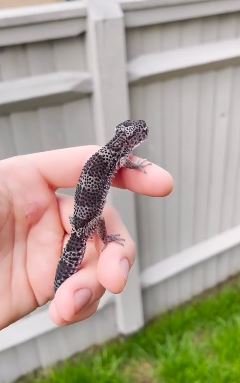Can leopard geckos eat superworms
Can leopard geckos eat superworms: Leopard geckos, with their unique appearance and docile nature, have become popular pets among reptile enthusiasts. Originating from the arid regions of Afghanistan, Pakistan, and Iran, these small lizards have captivated pet owners with their stunning patterns and gentle personalities.
Due to their relatively low maintenance requirements and ability to thrive in captivity, leopard geckos are widely regarded as an excellent choice for both beginner and experienced reptile keepers. One crucial aspect of caring for leopard geckos is providing them with a well-balanced diet.
A nutritious diet plays a fundamental role in maintaining the health and vitality of these reptiles. As obligate carnivores, leopard geckos require a diet primarily composed of insects to fulfill their nutritional needs.
In the wild, they prey upon various invertebrates such as small crickets, mealworms, waxworms, and even spiders. However, in captivity, it becomes the responsibility of the pet owner to ensure that their leopard gecko’s dietary requirements are met adequately.
This poses a challenge as it requires replicating the natural feeding habits of these creatures within an artificial environment. Providing a balanced diet that mimics what they would consume in the wild is vital for ensuring optimal health and preventing nutritional deficiencies.
Brief Overview of Leopard Geckos as Pets
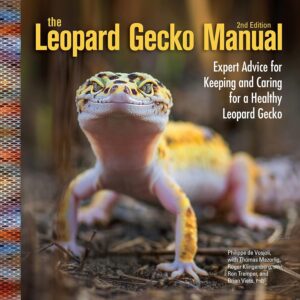 Leopard geckos (Eublepharis macularius) are small to medium-sized lizards belonging to the family Eublepharidae. They typically reach an adult length between 7-10 inches (18-25 cm) and display a diverse range of colors and patterns depending on their specific morph or genetic variation. These terrestrial reptiles are known for their distinctive eyelids (unlike most other gecko species) and their ability to detach their tails as a defense mechanism, which can then regenerate over time.
Leopard geckos (Eublepharis macularius) are small to medium-sized lizards belonging to the family Eublepharidae. They typically reach an adult length between 7-10 inches (18-25 cm) and display a diverse range of colors and patterns depending on their specific morph or genetic variation. These terrestrial reptiles are known for their distinctive eyelids (unlike most other gecko species) and their ability to detach their tails as a defense mechanism, which can then regenerate over time.
Leopard geckos are primarily nocturnal creatures, spending most of their days hiding in rock crevices or burrows and becoming active during the evening hours. As pets, leopard geckos are generally considered low-maintenance reptiles.
They have a calm demeanor and can be easily handled, making them an excellent choice for those seeking a reptile companion that is relatively docile. Additionally, leopard geckos have a long lifespan compared to many other reptiles, with individuals often living up to 15-20 years under proper care.
Importance of a Well-Balanced Diet for Leopard Geckos
Offering a well-balanced diet to leopard geckos is essential for promoting overall health and longevity. Like all animals, these lizards require specific nutrients to support vital bodily functions such as growth, reproduction, and immune system functioning. A diet lacking in essential nutrients can lead to various health issues including metabolic bone disease (MBD), which is characterized by weakened bones due to calcium deficiency.
MBD can cause deformities, fractures, and even death if left untreated. Additionally, improper nutrition may result in stunted growth, reproductive problems, compromised immune systems, and decreased lifespan.
To prevent such problems from arising, it is crucial that leopard gecko owners provide them with a diverse array of nutritious food sources that closely resemble their natural diet in the wild. A well-balanced diet for these lizards typically consists of gut-loaded insects (previously fed with nutrient-rich foods) along with occasional supplementation of vitamins and minerals as needed.
Leopard Geckos and their Dietary Needs
Natural diet in the wild
Leopard geckos, native to the arid regions of Afghanistan, Pakistan, and northwest India, have a naturally diverse diet in their wild habitat. These small reptiles are opportunistic predators feeding on a variety of invertebrates such as insects, spiders, and small arthropods.
Their natural diet mainly consists of crickets, mealworms, waxworms, and occasionally small vertebrates like lizards or baby mice when available. In the wild, leopard geckos actively hunt during the night using their keen eyesight to locate prey items and relying on their lightning-fast reflexes to capture them.
Nutritional requirements in captivity
When kept as pets in captivity, it is crucial to provide leopard geckos with a well-balanced diet that meets their specific nutritional requirements. A varied diet is essential for these reptiles to thrive and maintain optimal health.
The primary nutritional needs of leopard geckos include high-quality protein for growth and tissue repair, essential fatty acids for energy production and hormone synthesis, vitamins for metabolism regulation, minerals such as calcium for bone development and maintenance. In captivity, it is important to replicate the nutrient composition found in their natural diet as closely as possible.
This means offering a variety of different insect species that mimic what they would eat in the wild. Additionally, it is vital to provide proper supplementation to ensure they receive all necessary vitamins and minerals not adequately provided by their prey alone.
One key consideration when providing a captive diet is maintaining an appropriate calcium-to-phosphorus ratio (Ca:P ratio). Leopard geckos require more calcium than phosphorus because an inadequate Ca:P ratio can lead to metabolic bone diseases (MBD) such as softening or deformation of bones.
Therefore, offering gut-loaded insects or dusting prey items with a calcium supplement is crucial to meet their calcium requirements. By understanding the natural diet of leopard geckos in their wild habitat and addressing their specific nutritional needs in captivity, we can ensure these captivating reptiles receive a diet that promotes their health, longevity, and overall well-being.
Superworms: An Ideal Food Source for Leopard Geckos
What are superworms?
Superworms, scientifically known as Zophobas morio, are a popular and nutritious feeder insect for leopard geckos. These beetle larvae have a distinct appearance, characterized by their elongated body and dark brown exoskeleton.
They measure around 2-2.5 inches in length and possess a unique ability to move in wriggly, undulating motions. Unlike mealworms or waxworms, which are often mistaken for superworms due to their similar appearance, these insects have a more robust build and display increased activity levels.
Life cycle and development stages
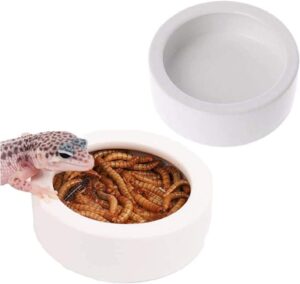 To understand the full potential of superworms as feeders for leopard geckos, it is essential to explore their life cycle. Superworms undergo complete metamorphosis; therefore, they progress through distinct developmental stages. The life cycle begins with small white eggs that hatch into tiny larvae known as “mealies.” These mealies consume primarily decaying organic matter or other plant materials until they reach a certain size before pupating into the adult beetle stage.
To understand the full potential of superworms as feeders for leopard geckos, it is essential to explore their life cycle. Superworms undergo complete metamorphosis; therefore, they progress through distinct developmental stages. The life cycle begins with small white eggs that hatch into tiny larvae known as “mealies.” These mealies consume primarily decaying organic matter or other plant materials until they reach a certain size before pupating into the adult beetle stage.
During the pupal stage, the mealies encase themselves within cocoons made from soil particles or various substrate materials. After undergoing metamorphosis inside these protective shells for several weeks, adult beetles emerge from the cocoons.
These beetles possess wings but rarely use them since they are not strong fliers. Instead, their main purpose is reproduction and ensuring the continuity of their species.
Nutritional value of superworms for leopard geckos
Can leopard geckos eat superworms: When it comes to nutritional content suitable for leopard geckos’ dietary needs, superworms stand out as an excellent option due to their impressive composition of key nutrients essential for reptile health. Protein content and amino acids:
Superworms are highly rich in protein, constituting approximately 20-22% of their total dry weight. This abundant protein source makes them a valuable option to promote growth, muscle development, and overall vitality in leopard geckos.
Moreover, they provide a well-balanced amino acid profile that aids in various physiological processes within the gecko’s body. Fat content and essential fatty acids:
Leopard geckos require healthy fats for energy production and as building blocks for cell membranes. Superworms provide a moderate fat content of around 17-19%, making them an ideal choice to fulfill these dietary requirements.
Additionally, they contain essential fatty acids, such as linoleic acid, which play crucial roles in maintaining proper skin integrity and promoting optimal hormonal function. Calcium to phosphorus ratio:
One notable aspect of superworms is their favorable calcium to phosphorus ratio. This balance is crucial for leopard geckos since they require higher calcium levels than phosphorus in their diet to prevent metabolic bone disease (MBD).
Superworms possess a calcium to phosphorus ratio of approximately 1:15, ensuring that leopard geckos receive sufficient calcium without an excess intake of phosphorus that could disrupt mineral absorption. By understanding the unique characteristics and nutritional benefits of superworms, leopard gecko owners can make informed decisions regarding their pet’s diet and ensure optimal health and well-being.
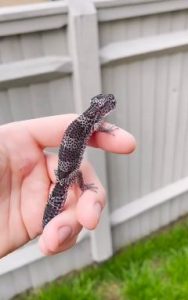
Preparing Superworms as Food for Leopard Geckos
Proper storage techniques to maintain freshness and nutrition
When it comes to ensuring the quality of superworms as food for leopard geckos, proper storage techniques play a crucial role. Superworms can be stored in a container with ventilation, such as a plastic tub or a worm keeper. It is important to create an optimal environment that maintains freshness and prevents the worms from becoming spoiled or stressed.
Temperature control
Temperature control is vital in preserving the health and nutrition of superworms. The ideal temperature range for storing superworms is between 70-80°F (21-27°C).
Temperatures below or above this range can lead to problems such as slowed growth or death of the worms. By using heating pads or heat lamps connected to thermostats, you can maintain consistent temperatures within the storage container.
Substrate selection
Choosing the right substrate for your superworms is essential for their overall well-being. A common choice is wheat bran, which provides a suitable bedding material that allows easy sifting and helps maintain humidity levels. Other options include oatmeal or crushed corn flakes, but it’s important to avoid substrates containing spices, salt, or other additives that could harm your gecko when consumed.
Cleaning the Superworms before Feeding
Sifting substrate
Before feeding superworms to your leopard gecko, it’s crucial to sift them through their substrate bedding carefully. This process helps remove any impurities such as feces or uneaten food particles that may be present in their enclosure. Using a fine-mesh sieve specifically designed for this purpose allows you to separate clean and healthy worms from debris effectively.
Can leopard geckos eat superworms: Removing dead or injured worms
Regularly inspecting the superworms for any dead or injured individuals is a vital step in ensuring the health and safety of your leopard gecko. Dead worms can quickly decompose, leading to bacterial growth and potential harm to your pet.
By removing these worms promptly, you maintain a clean environment that promotes optimal nutrition and minimizes any risk of disease transmission. Proper preparation of superworms as food for leopard geckos involves careful attention to storage techniques, temperature control, substrate selection, and cleaning methods.
By adhering to these practices, you can maintain the freshness and nutritional value of the worms while ensuring a safe feeding experience for your gecko. Remember that maintaining a healthy diet is crucial for your leopard gecko’s overall well-being and longevity.
Feeding Superworms to Leopard Geckos: Best Practices
Frequency of feeding superworms
Providing the appropriate frequency of superworm feedings is crucial for maintaining the health and well-being of your leopard gecko. The frequency will vary depending on the age and size of your gecko.
Adult leopard geckos typically require feeding every two to three days, while juvenile geckos, who are still growing rapidly, may need to be fed daily or every other day. Observing your gecko’s behavior and body condition is essential in determining whether you should adjust their feeding schedule.
Adult vs juvenile leopard geckos
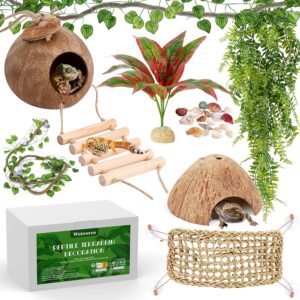 Can leopard geckos eat superworms: Understanding the differences between adult and juvenile leopard geckos is important when it comes to their dietary needs. Juvenile leopard geckos have higher energy requirements due to their growth phase, which means they need more frequent feedings compared to adult geckos.
Can leopard geckos eat superworms: Understanding the differences between adult and juvenile leopard geckos is important when it comes to their dietary needs. Juvenile leopard geckos have higher energy requirements due to their growth phase, which means they need more frequent feedings compared to adult geckos.
Additionally, juveniles tend to have a higher metabolism and faster digestion, so providing them with smaller superworms or cutting them into smaller pieces may be necessary. On the other hand, adult leopard geckos have lower energy demands since they are no longer growing at a rapid pace.
This means they can be fed larger superworms or whole insects less frequently. It’s essential to monitor your adult gecko’s weight and body condition regularly so that you can adjust their feeding schedule accordingly.
Feeding schedule recommendations
To establish an effective feeding schedule for your leopard gecko, it is best to consider factors such as age, size, overall health, and individual appetite. A general guideline for feeding adult leopard geckos is two or three times per week with appropriately sized superworms or other insects like crickets or mealworms as part of a varied diet. For juvenile leopard geckos, feeding every day or every other day with smaller-sized superworms or appropriately sized insects is recommended to support their growth and development.
It’s crucial to pay attention to your gecko’s behavior and weight gain or loss to fine-tune their feeding schedule. Remember that these recommendations are not set in stone, and it’s important to tailor the schedule based on your individual gecko’s needs.
Supplementing the diet with other foods
While superworms can be a significant part of a leopard gecko’s diet, it’s essential to provide them with a variety of foods for optimal nutrition. Leopard geckos are opportunistic feeders in the wild and consume various insects, such as crickets, mealworms, waxworms, and even small pinky mice.
Incorporating different types of insects into their diet ensures a diverse nutrient profile. For instance, crickets provide high protein content while mealworms offer more fat.
Furthermore, dusting these feeder insects with calcium and vitamin D3 supplements is essential for maintaining proper bone health. To promote variety in their diet and stimulate natural foraging behavior, you can also offer occasional treats like small pieces of fruit (such as papaya or mango) or finely chopped leafy greens (such as dandelion greens).
However, avoid feeding fruits and vegetables excessively as they should only make up a small portion of their overall diet. By following these best practices for feeding superworms to your leopard geckos – considering frequency based on age, size differences between adults and juveniles, establishing appropriate schedules tailored to each individual’s needs, and supplementing their diet with other nutritious sources – you can ensure that your beloved reptile companions are receiving a well-rounded nutritional intake essential for their optimal health and vitality.
Potential Risks and Considerations when Feeding Superworms to Leopard Geckos
Impaction risk
One of the main concerns when feeding leopard geckos superworms is the risk of impaction. Superworms have a tough exoskeleton, which can be difficult for leopard geckos to digest, especially if they are fed in large quantities. It is vital to ensure that the size of the superworms offered to your gecko is appropriate for its size and age.
If the superworms are too large, they may cause blockages in your pet’s digestive tract, resulting in serious health issues. To minimize this risk, always choose superworms that are no larger than the width between your gecko’s eyes.
Proper size selection
Selecting the right size of superworms is crucial to avoid both impaction and potential harm to your leopard gecko. As mentioned earlier, choosing worms that are smaller than the width between your gecko’s eyes will reduce the likelihood of any digestive issues.
Additionally, it is advisable to offer a mixture of different-sized worms rather than solely relying on one size. This variety allows your leopard gecko to consume a well-rounded meal without straining its digestive system.
Gut-loading the worms
Gut-loading refers to feeding nutritious food items to insects before offering them as prey items for leopard geckos. This practice ensures that when your pet consumes the superworms, it also ingests beneficial nutrients from their gut contents.
By providing a balanced diet rich in calcium-rich foods such as fruits and vegetables or specially formulated commercial diets designed for gut-loading insects, you can enhance their nutritional value significantly. Gut-loading can help compensate for any potential deficiencies in a single food source and provide an optimal diet for your leopard gecko.
Allergic reactions or sensitivities
Can leopard geckos eat superworms: While leopard geckos generally tolerate superworms well, it is essential to monitor their behavior and health after introducing this food item into their diet. Some geckos may develop allergic reactions or sensitivities to certain insect species, including superworms.
Symptoms of an adverse reaction may include excessive salivation, lethargy, skin inflammation, or changes in appetite. If you notice any of these signs after feeding your gecko superworms, it is crucial to consult a veterinarian who specializes in reptile care for further evaluation and guidance.
To sum up can leopard geckos eat superworms
Feeding leopard geckos a varied and well-rounded diet that includes superworms can be beneficial for their overall health. However, it is essential to be mindful of the potential risks and considerations associated with this particular food source.
By selecting appropriately sized worms to avoid impaction risk, gut-loading the worms for enhanced nutrition, and monitoring your pet for any allergic reactions or sensitivities, you can ensure their well-being. With proper care and attention to detail when incorporating superworms into your leopard gecko’s diet, you can provide them with a nutritious and enjoyable meal option that contributes to their overall vitality.

